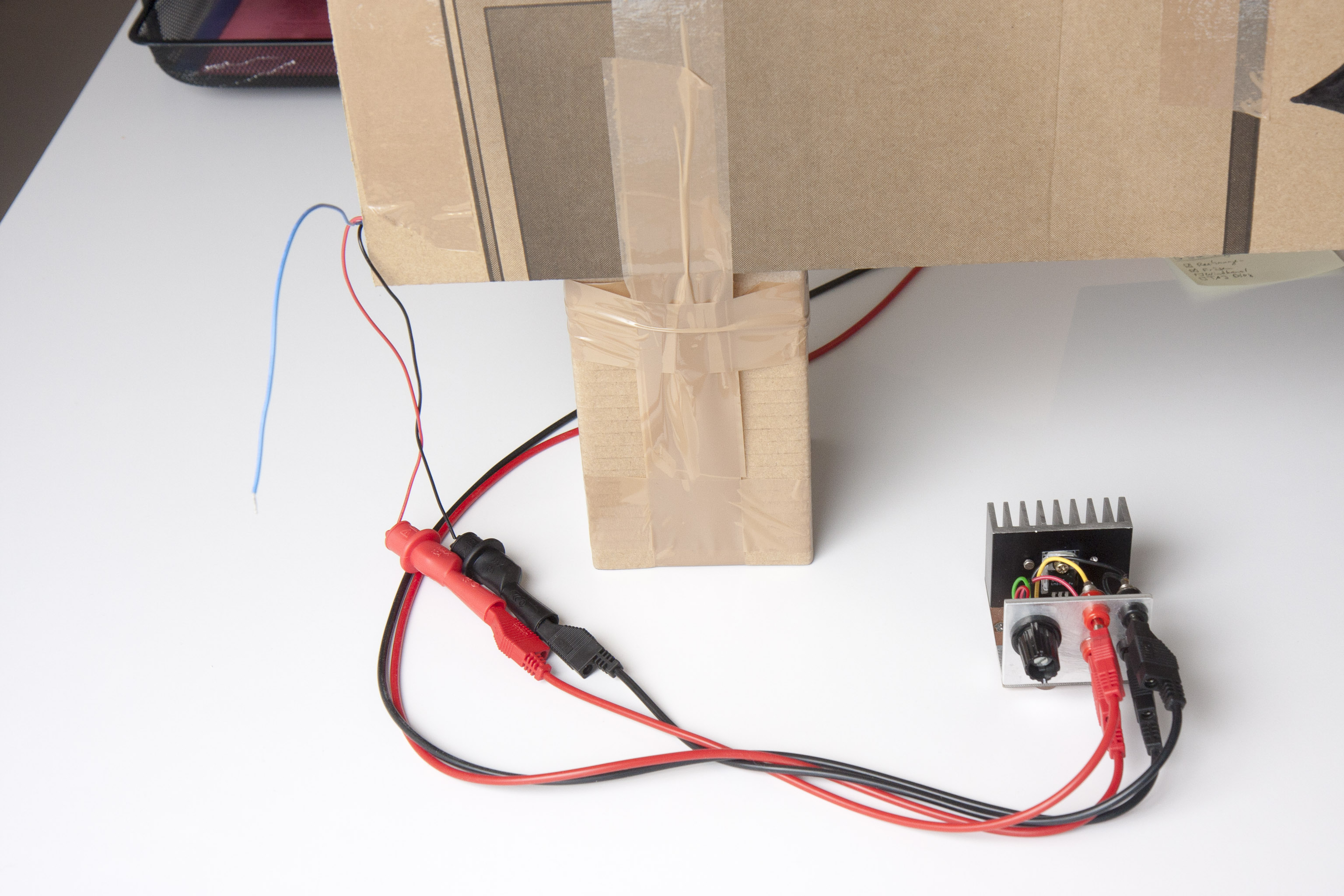It’s been a while since I posted the last update on the anemometer project. The reason for this is that I’m struggling with the aerodynamical design.
By the way: Click here for an overview over the ultrasonic anemometer project: https://soldernerd.com/arduino-ultrasonic-anemometer/
For my very first tests I had misappropriated my wife’s hair dryer to generate some wind. Of course the results wereneither reliable nor repeatable so I built myself this ghetto wind tunnel:
It’s basically a 120x120mm square tube, made of cardboard and about 1.4m in lenght.
It’s powered by a powerful 120mm size brushless fan drawing some 2.25 amps at 12 volts. I don’t know about the air throughput but it generates a loooot of wind for a fan this size.
The legs put it at the right height for the anemometer prototype. There are two holes at the bottom through which the anemometer’s arms can be inserted. The transducers are then nicely centered inside the cardboard tube.
I can regulate the fan speed using a simple LM317-based regulator. It might look familiar to some of you, it has it’s own post here: http://soldernerd.com/2014/11/10/variable-voltage-power-supply-using-a-lm317/
Unfortunately, the LM317 is only good up to 1.5A so I have to connect the fan directly to my 12V supply in order to run the fan at maximum speed.
As you know, the main indicator of wind speed is the phase shift between the transmitted and received signal. The distance is 0.21m and speed of sound is approximately 340m/s so with no wind, the signal travels about 618us. Signal frequency is 40kHz so one full wave corresponds to 25us. So a full wave (or a phase shift of 360 degrees) translates to a wind speed of around 14m/s or 50km/h.
Note that we usually calculate the difference in phase shift measured forth and back.In that case, the signal already repeats at half that wind speed or 7m/s.
Now my impression was that I don’t get nearly as much phase shift as I should. What makes this difficult is that I don’t know the true wind speed so maybe the wind is just not as strong as I think it is.
I went back and checked my code but didn’t find any bugs there. So I attached the scope to the transducers and looked at the signals directly. And the scope confirmed what I saw on the LCD display. So if there’s a good news it’s that both the electronics as well as the code seem to do what they should: They faithfully report what they get from the ultrasonic transducers. So maybe it’s just the physical design of my prototype that poses too much resistance to the wind and therefore causing too much of a dead wind effect.
I have done some more testing and will follow up on this shortly. Maybe some of you have a piece of advise for me…




